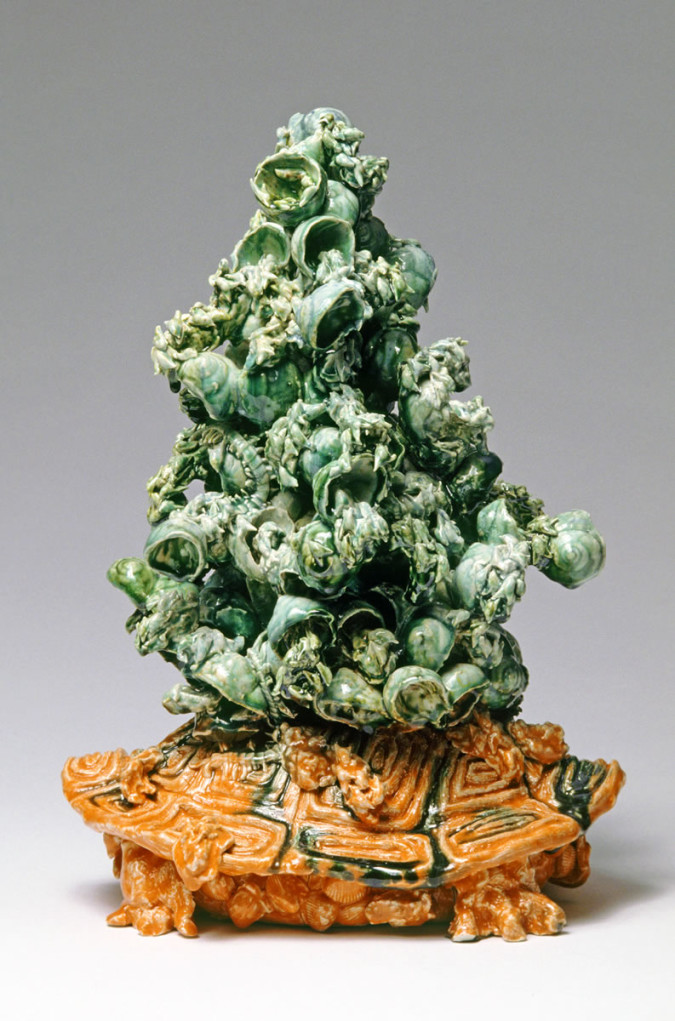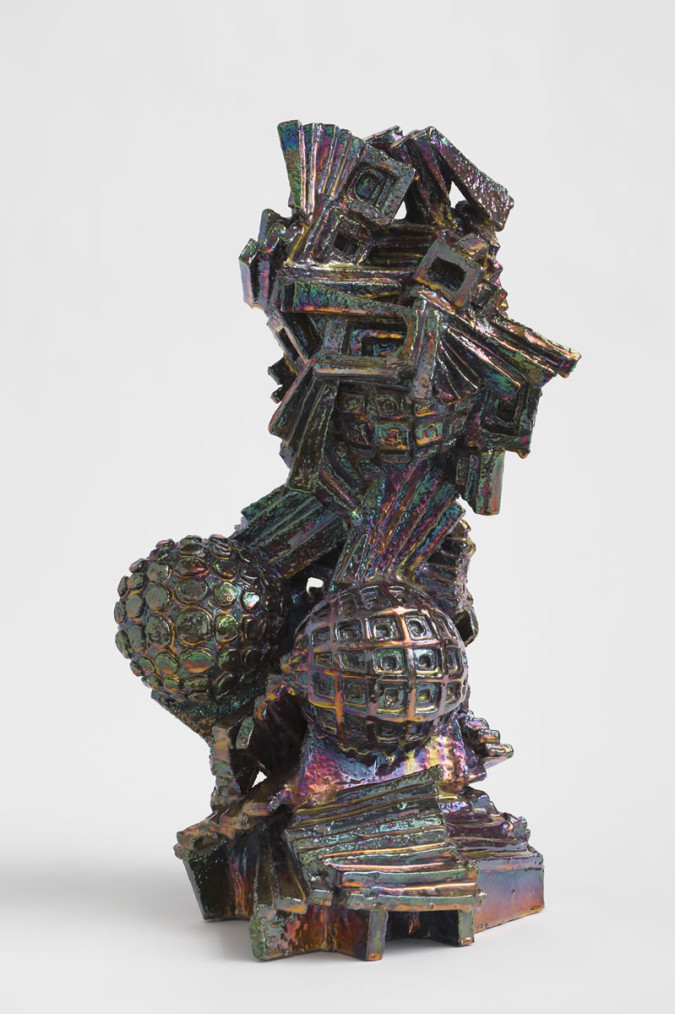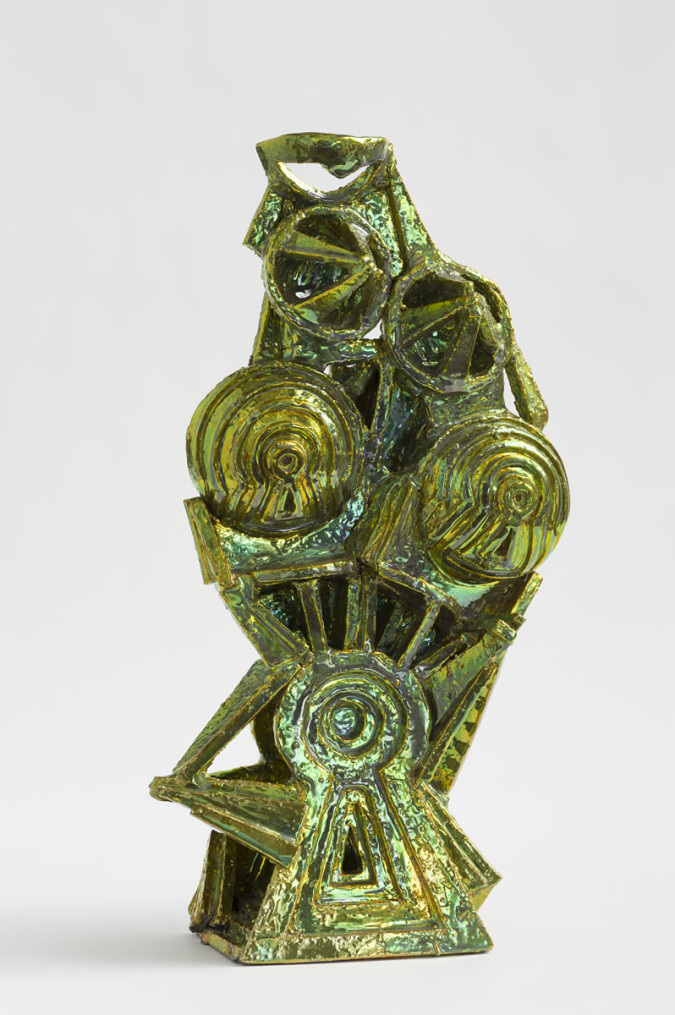Julia Kunin
Julia Kunin lives in Brooklyn, NY. She earned a B.A. from Wellesley College and an M.F.A. from The Mason Gross School of the Arts at Rutgers University. Julia Kunin’s work is represented by Sandra Gering Inc. Gallery where she had a solo show entitled “Les Guerilleres”, in 2015. Kunin has exhibited nationally and internationally. Solo exhibitions include: Golden Grove at Barry Whistler Gallery, Dallas, TX in 2013, Nightwood at Greenberg Van Doren Gallery, NY, NY in 20012, as well as Crimson Blossom at the Deutches Leder Museum in Offenbach, Germany in 2002. Kunin was a Fulbright Scholar to Hungary in 2013. She is the recipient of a 2010 Trust for Mutual Understanding Grant. In 2008 she received the Pollock-Krasner Foundation Grant and had a residency at Art Omi. In 2007 she received the John Michael Kohler Arts/Industry Artist Residency. Fellowships have included: The MacDowel Colony, The Marie Walsh Sharpe Art Foundation, A CEC Artslink grant to The Republic of Georgia, The Bellevuesaal residency in Wiesbaden, Germany, Yaddo, The Millay Colony, The Vermont Studio Center, The Core Program in Houston, TX and Skowhegan.
Question:
Among the many sources for your work are books of fiction, in particular Nightwood by Djuna Barnes and Les Guérillères by Monique Wittig. You have named sculpture and groups of sculpture after these books. I would like to know how you see the written word entering/influencing/molding your very physically embodied sculpture. Is it an act of translation, digestion, transformation, re-conception or another process?
Answer:
In 1987 I had just moved to Greenpoint Brooklyn, when based upon the advice of my friend Yvette Brackman, I began reading “The Newly Born Woman” by Catharine Clement and Helene Cixous, my first foray into French feminist theory. I then began reading more Marguerite Duras, having read “Moderato Cantabile”, several years earlier. I was excited to be accessing feminist theory through literature, and Duras’ novels had a direct influence upon my work. I was captivated by the structure of The Ravishing of Lol Stein, and The Vice Consul. Both novels involve the pursuit a female figure who was never fully seen for herself and was always described by others. She was defined by all of the action that went on around her, while the obsessive search in the novel, represented her simultaneous absence and presence. In 1988, in response to Duras I made a series of bronze wigs, some actual wigs dipped in wax and cast, and others simple abstractions of the idea of a wig. Each implied the absence and presence of a woman. In addition, I was consciously trying to express lesbian desire without objectifying the female figure. My solution was to create a border around an empty space. I was trying to figure out how to code lesbian identity in the work.
In 2000 I stopped making art that dealt directly with sexuality and gender identity. I continued, however, to focus on themes of sensuality, fecundity, decay and death through the use of animal imagery. Literature continued to serve as a catalyst and touchstone for my work and I began to read everything I could by Patricia Highsmith. One of her short stories called “The Snail Watcher” had a direct influence upon the imagery that I began to use, at a time when I wanted the work itself to be more performative. In “The Snail Watcher”, the main character becomes obsessed with watching snails mate. I don’t want to spoil the story for those who will read it, but let it be said that, as in many of Highsmith’s tales, it has a dark side to it. Because I was curious as to why the character would have been so engrossed in watching snails copulating, I rented the film Microcosmos. The film captured two large African snails taking part in what was the most sensual mating dance I had ever seen. The snails looked like giant sex organs. I must also mention that Highsmith herself had pet snails. After reading the story I began to film snails in different environments. I have hours and hours of footage that was taken during a two year period. I ultimately made a two minute piece called “Hermaphrodite”.
The snails reappeared when I began using animal imagery in my ceramic work, and I began to pile them up. In 2010 I was in a two person exhibition with Emi Avora at Greenberg Van Doren entitled “Against Nature” after the book A Rebours by J.K. Huysmans. This was the perfect title for both of us, our work being grotesque and baroque and highly influenced by the decorative arts. One of my pieces, “Jewelled Tortoise” a ceramic turtle whose shell is piled high with snails, octopi and detritus, is not only a nod to Highsmith, but is a direct homage to the world of artifice created in Huysman’s decadent novel. In the process of creating the perfect interior world, the main character Jean des Esseintes, certainly a queer character in my opinion, famously purchases a tortoise and has its shell encrusted with jewels so that when it moves, it glows and reflects light around the room. Sadly the jewels proved to be far too heavy a burden for this living treasure, and the beast died.
In 2012, I had my first solo show in New York at Greenberg Van Doren Gallery. “Nightwood”, named after the title of the book by Djuna Barnes, was the perfect fit. I chose a brilliant but obscure lesbian novel, in order to give the work a lesbian subtext. Nightwood is a book with so many layers of meaning that it needs to be read several times. The dark side of what was seen as sexual deviance, expressed in Nightwood’s rich modernist language included transgender characters and lesbian desire. Sexuality expressed itself through somnambulance, in a netherworld that remained hidden. The book’s tragic outcome of jealousy, and lost love meshed with the beautiful richly glazed surfaces which belied the death and decay that invaded all of the pieces in the exhibition.
I was on a Fulbright in Hungary in 2013, when I was struck by the level of homophobia and lack of lesbian visibility there. As a result I made a conscious decision to bring back some of the imagery that I had used in my lesbian identified work from the 90’s. I began to build female figures that were stacks of symbols that incorporated the dysfunctional space age architecture that I saw around me. “Les Guerielleres”, the exhibition at Sandra Gering Inc. in 2015, takes its title from the science fiction-like novel of the same name, by Monique Wittig. I had spent a lot of energy trying not to make “essentialist” work in the 1990’s, and find myself coming full circle to pay homage to Wittig’s at the time revolutionary writing on gender and language. The novel Les Guerielleres, reads like an epic poem, featuring a pantheon of mythologized female warriors, and it’s title felt well suited to an exhibition of portraits.
I recently began re-reading the book entitled Woman to Woman, which is a transcribed dialogue between Marguerite Duras and Xaviere Gauthier, published in 1987. Its intertwining of literature and theory reminds me why I began to read Duras in the first place. I think as my work moves forward, it also circles back to concepts I explored early on. Literature serves as a vehicle to get there.








